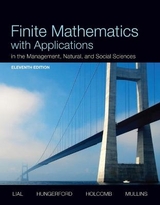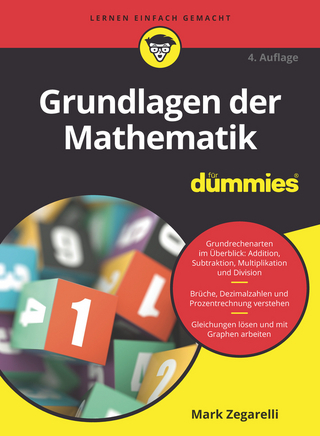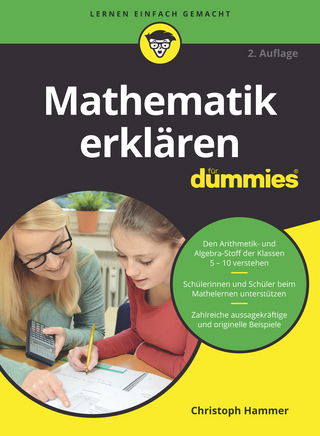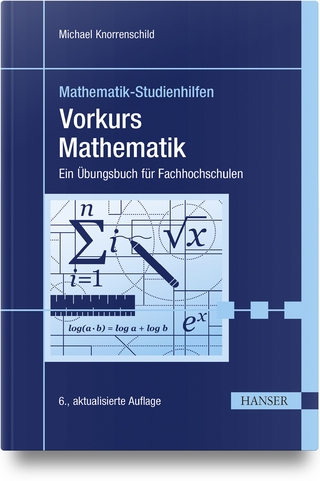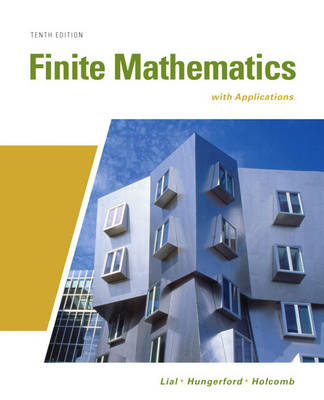
Finite Mathematics with Applications
Pearson (Verlag)
978-0-321-64554-8 (ISBN)
- Titel erscheint in neuer Auflage
- Artikel merken
Marge Lial has always been interested in math; it was her favorite subject in the first grade! Marge's intense desire to educate both her students and herself has inspired the writing of numerous best-selling textbooks. Marge, who received Bachelor's and Master's degrees from California State University at Sacramento, is now affiliated with American River College. Marge is an avid reader and traveler. Her travel experiences often find their way into her books as applications, exercise sets, and feature sets. She is particularly interested in archeology. Trips to various digs and ruin sites have produced some fascinating problems for her textbooks involving such topics as the building of Mayan pyramids and the acoustics of ancient ball courts in the Yucatan. Thomas W. Hungerford received his bachelor’s degree from Holy Cross and his Ph.D. from the University of Chicago. He taught for many years at the University of Washington (Seattle) before moving to Cleveland State University in 1980. He has been at St. Louis University since 2003. He has written a number of research articles in algebra and several in mathematics education. Dr. Hungerford is the author or coauthor of more than a dozen mathematics textbooks, ranging from high school to graduate level, several of which are published by Addison-Wesley. He is active in promoting the effective use of technology in mathematics instruction. Dr. Hungerford has also been a referee and reviewer for various mathematical journals and has served on National Science Foundation panels for selecting grant recipients. John P. Holcomb, Jr. received his bachelor's degree from St. Bonaventure University and his Ph.D. from the University at Albany, State University of New York. He taught for five years at Youngstown State University prior to arriving at Cleveland State University in Fall 2000. He is an associate professor and frequently collaborates with researchers in a variety of disciplines where he provides statistical analysis. Dr. Holcomb has also authored several papers in statistical education and is very active in the American Statistical Association and the Mathematical Association of America. He was named a Carnegie Scholar in 2000 by the Carnegie Foundation for the Advancement of Teaching and Learning and in 2003 received the Waller Award from the American Statistical Association for outstanding teaching of introductory statistics.
Chapter 1: Algebra and Equations
1.1 The Real Numbers
1.2 Polynomials
1.3 Factoring
1.4 Rational Expressions
1.5 Exponents and Radicals
1.6 First-Degree Equations
1.7 Quadratic Equations
Chapter 1 Summary
Chapter 1 Review Exercises
Case Study 1: Consumers Often Defy Common Sense
Chapter 2: Graphs, Lines, and Inequalities
2.1 Graphs
2.2 Equations of Lines
2.3 Linear Models
2.4 Linear Inequalities
2.5 Polynomial and Rational Inequalities
Chapter 2 Summary
Chapter 2 Review Exercises
Case Study 2: Using Extrapolation to Predict Life Expectancy
Chapter 3: Functions and Graphs
3.1 Functions
3.2 Graphs of Functions
3.3 Applications of Linear Functions
3.4 Quadratic Functions
3.5 Applications of Quadratic Functions
3.6 Polynomial Functions
3.7 Rational Functions
Chapter 3 Summary
Chapter 3 Review Exercises
Case Study 3: Architectural Arches
Chapter 4: Exponential and Logarithmic Functions
4.1 Exponential Functions
4.2 Applications of Exponential Functions
4.3 Logarithmic Functions
4.4 Logarithmic and Exponential Equations
Chapter 4 Summary
Chapter 4 Review Exercises
Case Study 4: Characteristics of the Monkeyface Prickleback
Chapter 5: Mathematics of Finance
5.1 Simple Interest and Discount
5.2 Compound Interest
5.3 Annuities, Future Value, and Sinking Funds
5.4 Annuities, Present Value, and Amortization
Chapter 5 Summary
Chapter 5 Review Exercises
Case Study 5: Continuous Compounding
Chapter 6: Systems of Linear Equations and Matrices
6.1 Systems of Two Linear Equations in Two Variables
6.2 Larger Systems of Linear Equations
6.3 Applications of Systems of Linear Equations
6.4 Basic Matrix Operations
6.5 Matrix Products and Inverses
6.6 Applications of Matrices
Chapter 6 Summary
Chapter 6 Review Exercises
Case Study 6: Matrix Operations and Airline Route Maps
Chapter 7: Linear Programming
7.1 Graphing Linear Inequalities in two Variables
7.2 Linear Programming: The Graphical Method
7.3 Applications of Linear Programming
7.4 The Simplex Method: Maximization
7.5 Maximization Applications
7.6 The Simplex Method: Duality and Minimization
7.7 The Simplex Method: Nonstandard Problems
Chapter 7 Summary
Chapter 7 Review Exercises
Case Study 7: Cooking with Linear Programming
Chapter 8: Sets and Probability
8.1 Sets
8.2 Applications of Venn Diagrams
8.3 Introduction to Probability
8.4 Basic Concepts of Probability
8.5 Conditional Probability and Independent Events
8.6 Bayes’ Formula
Chapter 8 Summary
Chapter 8 Review Exercises
Case Study 8: Medical Diagnosis
Chapter 9: Counting, Probability Distributions, and Further Topics in Probability
9.1 Probability Distributions and Expected Value
9.2 The Multiplication Principle, Permutations, and Combinations
9.3 Applications of Counting
9.4 Binomial Probability
9.5 Markov Chains
9.6 Decision Making
Chapter 9 Summary
Chapter 9 Review Exercises
Case Study 9: QuickDraw® from the New York State Lottery
Chapter 10: Introduction to Statistics
10.1 Frequency Distributions
10.2 Measures of Central Tendency
10.3 Measures of Variation
10.4 Normal Distributions
10.5 Normal Approximation to the Binomial Distribution
Chapter 10 Summary
Chapter 10 Review Exercises
Case Study 10: Statistics in the Law–The Castañeda Decision
Appendixes
Appendix A: Graphing Calculators
Appendix B: Tables
Table 1: Formulas from Geometry
Table 2: Areas under the Normal Curve
Table 3: Integrals
Answers to Selected Exercises
Index of Applications
Index
| Erscheint lt. Verlag | 1.4.2010 |
|---|---|
| Sprache | englisch |
| Maße | 218 x 256 mm |
| Gewicht | 1470 g |
| Themenwelt | Mathematik / Informatik ► Mathematik ► Allgemeines / Lexika |
| ISBN-10 | 0-321-64554-5 / 0321645545 |
| ISBN-13 | 978-0-321-64554-8 / 9780321645548 |
| Zustand | Neuware |
| Haben Sie eine Frage zum Produkt? |
aus dem Bereich
